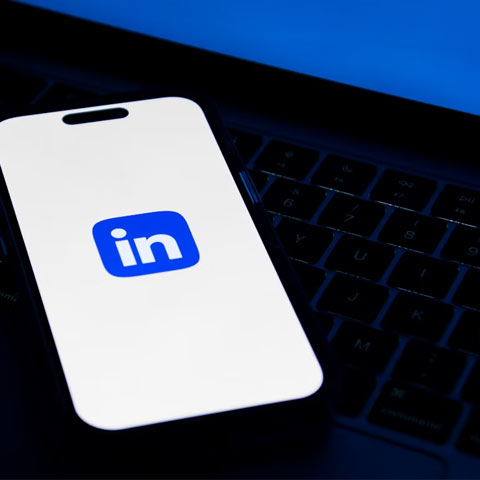The Most-Used Customer Segmentation Models


For your marketing campaigns to have an impact, they need to both fulfil their strategic goals and be delivered to the right people, at the right time. To achieve this, you’ll need to grasp exactly who your audience is, and their individual values, needs and preferences. To personalise your marketing and appeal to each customer, you’ll need to create a unique customer journey by using the right customer segmentation model.
Here, we’ll explore the most-used customer segmentation models, their benefits, and how customer segmentation can give you valuable insight into your customers’ values, needs and behaviours.
What is customer segmentation?
Customer segmentation involves you organising your customers into specific groups based on their shared characteristics, interests and behaviours. Customer segmentation aims to deliver a more relevant, personalised customer experience and marketing to your audience.
Each of your customers are unique individuals with different traits, needs, expectations and pain points. Customer segmentation allows you to truly understand your customers, so you can tailor your marketing, services and products to the needs of specific groups. In return, you should see an increase in customer loyalty and a boost in your conversion rate.
What are the benefits of customer segmentation?
Why should you segment your customers into groups - what are the benefits? Customer segmentation is more than just putting your audience into categories. It actually grants you a deeper understanding of who your customers are, and their unique preferences and challenges. By knowing this information you can make adjustments to your service, marketing techniques and even your product offering to appeal to the needs of your customers. You’ll also be able to tailor your marketing campaigns or ads to ensure your customers identify and resonate with your messaging, making them more likely to convert.
Customer segmentation can also improve your customer service efforts, as you’re more likely to understand the needs of your customers, which can offer them more understanding of their own desires and a stronger connection to your brand. It can also help prepare your team, particularly those that deal with customers directly, for challenges they may face with customers and how to deal with them.
Customer segmentation models
A customer segmentation model is a specific way for you to divide your customers into groups based on their shared characteristics or traits. Here, we’ll dive into the different customer segmentation models you can explore for you to better understand your audience.
Demographic segmentation
Demographic segmentation groups your customers or potential customers together based on certain characteristics, such as age, gender, income and occupation. Dividing your customers by demographic can help you better understand their needs so you can make tweaks to your marketing campaigns to target and resonate with them. Demographic segmentation can also make your marketing strategies more specific and help you make the most of your time and resources.
An example of demographic segmentation
You may choose to segment your audience by their age, to understand how their age plays a part in their buying habits. For example, soft drink companies like Coca-Cola often target a younger demographic, such as those aged 15-25, and use younger people in their marketing campaigns to market themselves as young and free-spirited.
Geographic segmentation
As the name may suggest, geographic segmentation involves you segmenting your audience by geographic location - such as grouping your customers by the region they live in or work. The size of the area you target should vary depending on the needs of your business. For example, if you’re a larger business, you should aim to target a larger area and if you’re just starting out you may prefer to target a smaller area to begin with to keep your marketing cost-effective.
There are six factors that make up geographic segmentation, including:
- Location (country, county, city, postcode)
- Timezone
- Climate or season
- Cultural preferences
- Language
- Population type and density, such as urban or rural
Geographic segmentation is a popular type of customer segmentation as it often requires fewer data points than other types, and should therefore take less time and resources to implement. It can also help improve your customer relationships and customer loyalty, as you can tailor your marketing campaigns to the customer’s location and preferences, which will make your marketing more relevant to them.
An example of geographic segmentation
An example of geographic segmentation is if a company were to capitalise on the country having a heat wave. Let’s say certain counties of the UK were experiencing higher temperatures than others - a coffee retailer, for example, could market their iced drinks to those specific areas that are experiencing higher temperatures, as they are more likely to purchase those iced drinks.
Psychographic segmentation
Psychographic segmentation categorises people according to the psychological traits that influence their buying habits. Examples of this include personality, attitude, values and interests. You can question what motivates your customers, what principles they have, what their inherent beliefs are and what drives them to make conscious or unconscious decisions.
An example of psychographic segmentation
You may choose to segment your audience by their lifestyles, to understand what they value and how they choose to spend their money. An example of this is if you’re a vitamins and supplements company, you may choose to target athletes or those who care about healthy eating, and market your product accordingly.
Technographic segmentation
Technographic segmentation is another customer segmentation model that categorises customers or potential customers based on their technological usage and preferences. Doing so can offer you valuable insight into the interests and needs of your customers, to help you make changes to your marketing that can improve your sales and customer experience.
To divide your customers into technographic segments, you can collect customer data on the technology products and services they use - such as the types of devices they most commonly use when purchasing from, or interacting with your brand. From this, you can divide your customers into categories such as smartphone users, tablet users and online shoppers. Technographic segmentation can give you valuable insight into your customers’ preferences for you to create targeted marketing campaigns and a personalised customer experience.
An example of technographic segmentation
Technographic segmentation can offer valuable insights into device preferences, which could benefit particular businesses such as mobile phone providers. If you’re a mobile phone provider, you might use technographic segmentation to identify those who use mobile data more than Wi-Fi, for example. This could help you to make tweaks to your marketing to better target these customers who may be interested in your data plans.
Needs-based segmentation
As the name suggests, needs-based segmentation is a customer segmentation model that divides your customers into groups based on their needs and problems. By identifying these needs, you can tailor your marketing or products to ensure you’re meeting their requirements. You’ll be able to make marketing decisions informed by data, rather than assuming what your customers need.
But how do you conduct needs-based segmentation? The first step is qualitative research. You need to ask your customers or potential customers about their wants, motivations and needs in relation to a particular product or service you offer. Put together a questionnaire related to those needs, so you can understand what matters most to them and what would encourage them to remain loyal to your brand. From the results, you’ll know how to optimise your marketing strategy to meet your customers’ needs.
An example of needs-based segmentation
When using needs-based segmentation, you’ll likely spot that some customers’ needs aren’t being met. For example, a skincare brand may find a portion of their customer's needs aren’t being met, as a particular product has actually caused their skin to break out rather than minimise spots. By knowing their needs aren’t being met, the brand could go and make tweaks to both their products and their marketing to ensure this group of customers’ issues get resolved and create value for them as a result.
Behavioural segmentation
Behavioural segmentation involves you grouping your customers or potential customers based on the behaviours they have. These behaviours may include their buying preferences, the content they consume and how they interact with social media, websites or businesses.
Behavioural segmentation often goes beyond psychographic or demographic segmentation, by offering you a more complete understanding of your audience and how they behave and interact. From there, you can then market your product or service to these behaviours and create more successful marketing campaigns.
Behavioural segmentation can also help you to identify your most engaged users, such as those who most regularly open your newsletters or spend the most time visiting your Twitter feed. This can help you to make more informed decisions when it comes to your marketing activity, and how you should best allocate your budget, time and resources. All in all, behavioural segmentation can offer insight into who is most likely to convert.
An example of behavioural segmentation
Timing can play an important role in a customer’s buying behaviour. For example, occasion purchasing, such as reserving a table at a restaurant on Valentine's Day or buying an engagement ring, rely on a specific occasion that influences the purchase.
Starbucks takes advantage of occasion-based segmentation to both reward their customers and increase sales. They offer incentives for their loyal customers to encourage them to come back and purchase again later in the day. To do this, they use both email marketing and push notifications from their app to offer happy hour events to customers that commonly make a purchase at a specific time of day, for example on their morning commute.
See how Apteco software can help you segment
Get to know your customers and watch your marketing efforts be transformed with Apteco software. You can build meaningful campaigns that appeal to your customers’ needs and values, and watch their brand loyalty grow in return. Achieve the personalisation you want across every channel with every customer today.
Why not book a demo to get started?
Want more like this?
Want more like this?
Insight delivered to your inbox
Keep up to date with our free email. Hand picked whitepapers and posts from our blog, as well as exclusive videos and webinar invitations keep our Users one step ahead.
By clicking 'SIGN UP', you agree to our Terms of Use and Privacy Policy


By clicking 'SIGN UP', you agree to our Terms of Use and Privacy Policy
Other content you may be interested in
Categories

Want more like this?


Want more like this?
Insight delivered to your inbox
Keep up to date with our free email. Hand picked whitepapers and posts from our blog, as well as exclusive videos and webinar invitations keep our Users one step ahead.
By clicking 'SIGN UP', you agree to our Terms of Use and Privacy Policy









